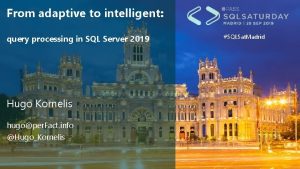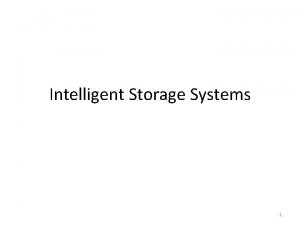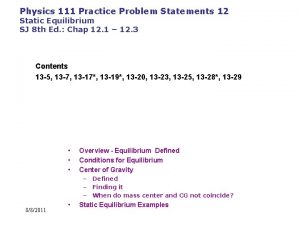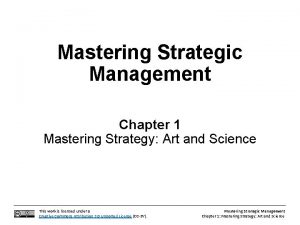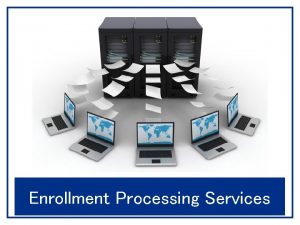Mastering Intelligent Clouds Engineering Intelligent Data Processing Services




















- Slides: 20

Mastering Intelligent Clouds Engineering Intelligent Data Processing Services in the Cloud Sergiy Nikitin, Industrial Ontologies Group, University of Jyväskylä, Finland Presented at ICINCO 2010 conference Funchal, Madeira

Contents • Background on Cloud Computing • Extending cloud computing stack • UBIWARE platform • Data Mining services in the Cloud • Conclusions

Cloud Computing: already on the market • • • Sales. Force. com (SFDC) Net. Suite Oracle IBM Microsoft Amazon EC 2 Google etc. (for a complete survey see Rimal et al. , 2009)

Cloud Computing stack Cloud computing stack Application as a Service Saa. S Application (business logic) Services (Payment, Identity, Search) Paa. S Solution stack (Java, PHP, Python, . NET) Structured storage (e. g. databases) Raw data storage and network Iaa. S OS-virtualization Virtualization Machine Hardware configuration What add-value can we offer to the Paa. S level?

Autonomic Computing • A vision introduced by IBM in 2003 (Kephart et al. ) software components get a certain degree of selfawareness q self-manageable components, able to “run themselves” q • Why? To decrease the overall complexity of large systems q To avoid a “nightmare of ubiquitous computing” – an unprecedented level of complexity of information systems due to: q • drastic growth of data volumes in information systems • heterogeneity of ubiquitous components, standards, data formats, etc.

Intelligence as a Service in the cloud Services (Payment, Identity, Search) Paa. S Solution stack (Java, PHP, Python, . NET) Structured storage (e. g. databases) Agent-driven service API Configuration management Data adaptation Intelligent services Solution stack Domain models UBIWARE • Smoothly integrate with the infrastructure • Build stack-independent solutions • Automate reconfiguration of the solutions

UBIWARE platform UBIWARE Agent Beliefs storage Pool of Atomic Behaviours . class S-APL RAB RAB Blackboard Data RAB Role Script S-APL repository

API extension: OS perspective Cloud Platform Provider Virtual machine PCA Customer applications and services Extended API SW Platform PCA – Personal Customer Agent PMA – Platform Management Agent PMA

Data Adaptation as a Service Cloud Platform Provider Virtual machine PMA SW Platform Customer applications and services Extended API PCA Data Service Files Adapter Agent PCA – Personal Customer Agent PMA – Platform Management Agent DB/KB

Platform-driven service execution in the cloud Cloud Platform Provider Virtual machine Customer applications API SW Platform PCA Service execution environment API PCA – Personal Customer Agent PMA – Platform Management Agent PMA

Agent-driven Paa. S API extension Agent-driven flexible intelligent service API Agent-driven Adapters Smart data source connectivity Configurable data transformation Agent-driven intelligent services Configurable model Service mobility Proactive self-management Smart cloud stack Stack control and updates Failure-prone maintenance Embedded and remote services Smart Ontology Domain models Standards & compatibility System configuration and policies User applications in cloud Proactive adapter management

Intelligent services: Paa. S API extension Agent-driven intelligent services Configurable model Service mobility Proactive self-management User applications in cloud Agent-driven flexible intelligent service API

Agent-driven data mining services q Data mining applications are capabilities Agents can wrap them as services q PMML language - a standard for DM-model representations q Data Mining Group. PMML version 4. 0. URL http: //www. dmg. org/pmml-v 4 -0. html q Agent service Input Vector Model DM model Output DM result

PMML*: data mining model descriptions PMML model Header Version and timestamp Model development environment information Data dictionary Definition of: variable types, valid, invalid and missing values Data Transformations Normalization, mapping and discretization Data aggregation and function calls Model Description and model specific attributes Mining schema Definition of: usage type, outlier and missing value treatment and replacement Targets Score post-processing - scaling Definition of model architecture/parameters PMML* - Predictive Model Markup Language (www. dmg. org/pmml-v 3 -0. html)

Data mining service types Input Fixed model service Model player service Output Vector to be classified: alarm message: V 1={0. 785, High, node_23} Paper machine alarms classifier neural network model (M 1) Vector class of V 1 is: “Urgent Alarm” according to model M 1 Inputs Model Outputs Model player Model M 1 assigned Paper machine alarms classifier neural network model (M 1) Vector class of V 1 is: “Urgent Alarm” according to model M 1 Model Output Model constructor Model M 1 parameters Set up a model M 1 Vector to be classified: alarm message: V 1={0. 785, High, node_23} Input Model construction service Model Learning samples and the desired model settings

A use case for data mining service stack q A “Web of Intelligence” case: Input 1 2 3 4 Model Output Pattern of learning data to be collected: ? V={? p 1, ? p 2, ? p 3} Distributed query planning and execution A set of learning samples (vectors) Learning samples and the desired model settings Model constructor Model M 1 parameters Model player Model M 1 assigned Paper machine alarms classifier neural network model (M 1) Vector class of V 1 is: “Urgent Alarm” according to model M 1 Set up a model M 1 Vector to be classified: alarm message: V 1={0. 785, High, node_23}

Data Mining services in UBIWARE Ontology construction Data Mining service Model construction service Computational service Fixed model service DM e r Co Mining method ice v r se Supervised Learning Model player service gy o l to on Neural networks Paper industry Clustering Da ta min ing do ma in Industry Process Industry Unsupervised learning Electrical Engineering Power networks Problem domain Power plant k. NN

UBIWARE in cloud computing stack Cloud computing stack Applications and Software as a Service Example application Application as a Service DM model wrapped as a service for paper industry Application (business logic) DM model for paper industry Services (Payment, Identity, Search) Platform as a service Solution stack (Java, PHP, Python, . NET) Structured storage (e. g. databases) Data Mining service player Agent-driven service API UBIWARE for control and management in cloud Semantic Business Scenarios Domain-specific components as services Domain model (Ontology) & components Cross-domain Middleware components Connectors, Adapters RABs, Scripts Componentization & Servicing Cross-layer configuration & management mechanisms Raw data storage and network OS-virtualization Infrastructure as a service Virtualization Machine Hardware configuration Technologies in cloud

Conclusions • Web intelligence as a cloud service • Ubiware is a cross-cutting management and configuration glue • Advanced data adaptation mechanisms as cloud services q q A competitive advantage for cloud providers Seamless data integration for service consumption and provisioning • Autonomous agents as a Service (A 4 S) q Supply any resource with the “autonomous manager”

Thank you!
 Sql server intelligent query processing
Sql server intelligent query processing Bottom-up processing example
Bottom-up processing example Bottom up processing vs top down processing
Bottom up processing vs top down processing Bottom-up processing example
Bottom-up processing example Neighborhood processing
Neighborhood processing What is secondary processing
What is secondary processing Point processing in digital image processing
Point processing in digital image processing Histogram processing in digital image processing
Histogram processing in digital image processing Parallel processing vs concurrent processing
Parallel processing vs concurrent processing A generalization of unsharp masking is
A generalization of unsharp masking is پردازش تصویر
پردازش تصویر Morphological
Morphological Top down vs bottom up psychology
Top down vs bottom up psychology What is interactive processing
What is interactive processing Intelligent storage
Intelligent storage Www.masteringphysics.com register
Www.masteringphysics.com register Masteringenvironmentalscience
Masteringenvironmentalscience Mastering aand p
Mastering aand p Introduction to static equilibrium mastering physics
Introduction to static equilibrium mastering physics Mastering physics
Mastering physics Electric potential
Electric potential
